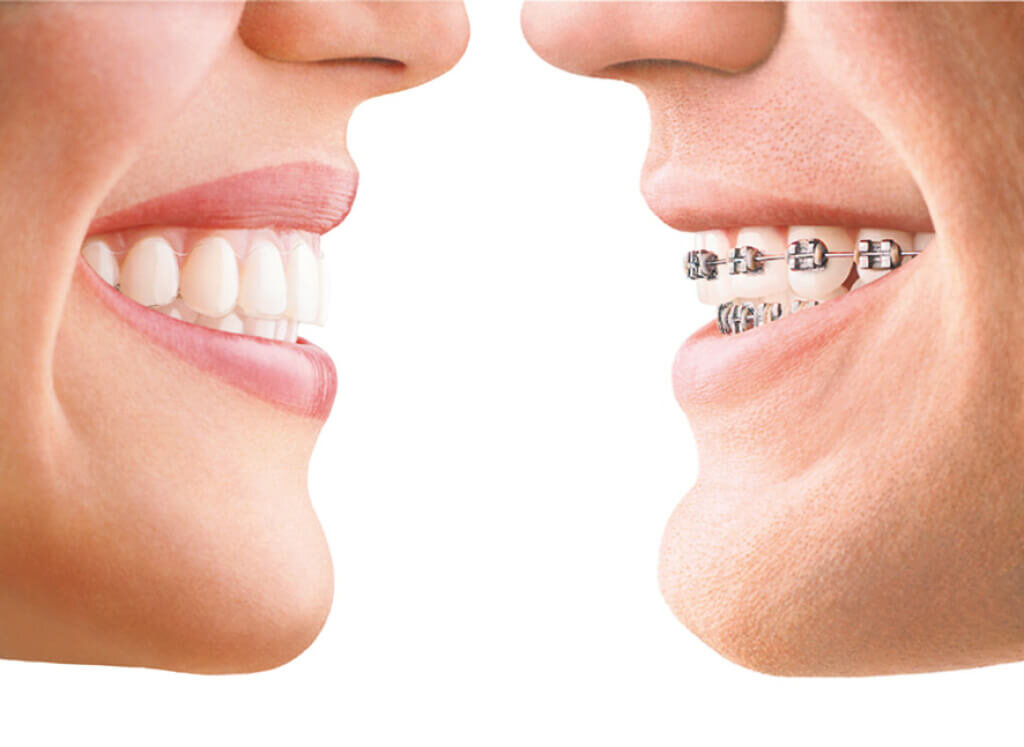The Cost of Invisalign: Understanding the Investment in Your Smile
The Cost of Invisalign: Understanding the Investment in Your Smile
Blog Article
Invisalign vs. Conventional Dental braces: Which Choice Is Right for You?
When taking into consideration orthodontic treatment, the option between Invisalign and standard dental braces provides several essential elements that warrant cautious assessment. Invisalign supplies a discreet option with detachable aligners, while standard braces provide an extra visible yet efficient solution for severe misalignment. Each option includes distinct advantages and downsides connected to aesthetic appeals, convenience, treatment duration, and expense. Comprehending these subtleties is important for making a notified choice that aligns with your personal choices and way of living. The question remains: which choice will best meet your orthodontic demands and assumptions?
Overview of Treatment Choices

In comparison, conventional braces include steel brackets and cables that are bound to the teeth. This approach uses constant stress in time to accomplish placement. While effective for complicated orthodontic problems, traditional dental braces need routine sees for changes and can present challenges in preserving dental health due to the difficulty of cleaning up about brackets and wires.
Both options have their advantages, and the option commonly depends upon certain dental conditions, way of life choices, and individual conformity. Ultimately, consulting an orthodontic expert is vital for identifying the most appropriate treatment plan tailored to specific demands. Recognizing the subtleties of each choice can considerably affect the overall success of orthodontic treatment.
Visual Factors To Consider
A considerable factor affecting the choice in between Invisalign and traditional dental braces is the aesthetic charm each therapy provides. Invisalign aligners are crafted from clear plastic, making them virtually undetectable when put on.
In contrast, typical braces contain steel brackets and cables, which can be extra visible. While innovations in orthodontic technology have actually brought about the development of smaller braces and colored elastics, conventional dental braces still keep an even more noticeable account. For some people, the visibility of braces may hinder them from looking for necessary treatment.
Eventually, the selection in between Invisalign and traditional braces may hinge on personal preferences pertaining to looks. Patients who prioritize discretion commonly lean towards Invisalign, while those that are much less concerned about exposure might select traditional dental braces. Recognizing the visual effects of each alternative is essential for making a notified decision that straightens with one's way of living and choices.
Convenience and Convenience

In regards to convenience, Invisalign aligners are removable, enabling patients to enjoy their favorite foods without constraint and preserve optimum dental health. Cleaning and flossing are streamlined, as the aligners can be secured during these routines, whereas traditional braces need careful steering around braces and cables.
In comparison, conventional dental braces require regular changes, making them less hassle-free for those with hectic schedules. Generally, the comfort and ease of Invisalign make it an attractive hop over to these guys choice for lots of individuals looking for orthodontic treatment.
Therapy Duration and Effectiveness
While both Invisalign and typical dental braces work in dealing with dental imbalances, the period of treatment can differ considerably in between both options. Commonly, Invisalign treatment can take anywhere from 12 to 18 months, depending upon the intricacy of the case. The clear aligners function by progressively shifting teeth into their wanted settings, and routine follow-ups with an orthodontist aid ensure development continues to be on the right track.
On the other hand, typical braces typically call for a longer dedication, generally ranging from 18 months to three years. This is because of their set nature and using cables and braces, which can be extra effective for intricate instances and extreme misalignments (Invisalign). The treatment effectiveness of this conventional braces is well-documented, as they permit specific changes and better control over tooth activity
Inevitably, the choice in between Invisalign and traditional braces may rest on both the anticipated therapy period and the details oral issues handy. Consulting with an orthodontist is essential, as they can give customized suggestions based on private requirements, making sure the chosen method aligns with desired timeframes and outcomes.
Cost Contrast and Insurance Coverage Choices
Cost plays a significant duty in the decision-making process for individuals considering orthodontic therapy, whether selecting Invisalign or conventional dental braces. Usually, the cost of Invisalign arrays from $3,000 to $8,000, while standard braces typically set you back between $2,000 and $6,000. Variables affecting these costs consist of the complexity of the instance, the duration of therapy, and geographical place.
Many oral insurance coverage plans provide partial protection for orthodontic therapies, but the specifics can vary commonly. Generally, conventional dental braces may be a lot more frequently covered by insurance plans contrasted to Invisalign, which some insurance firms categorize as an aesthetic treatment.
Additionally, several orthodontic methods use versatile layaway plan, making both therapy choices more available. Individuals must ask about prospective funding alternatives and discount rates for ahead of time payments. Reviewing the total price, including insurance benefits and repayment plans, is vital for making a notified decision that aligns with both visual choices and budget considerations.

Final Thought
In recap, the option between Invisalign and standard braces rests on multiple variables, including visual preferences, convenience, therapy duration, and price. Invisalign provides a very discreet, removable choice that facilitates oral health and dietary versatility, while traditional dental braces might be preferable for complex oral concerns and typically come with a lower price factor. Inevitably, assessment with an orthodontist is necessary to examine specific circumstances and figure out one of the most suitable therapy alternative for achieving ideal oral placement.
When considering orthodontic treatment, the selection in between Invisalign and traditional braces provides numerous important elements that warrant careful assessment.Contrasting Invisalign and typical braces reveals distinctive therapy choices for orthodontic adjustment.While both Invisalign and traditional dental braces are effective in remedying oral misalignments, the period of therapy can vary dramatically between the two alternatives.Expense plays a significant function in the decision-making procedure for people thinking about orthodontic therapy, whether choosing for Invisalign or traditional braces.In summary, the selection between Invisalign and typical braces hinges on numerous aspects, including visual choices, comfort, treatment period, and cost.
Report this page